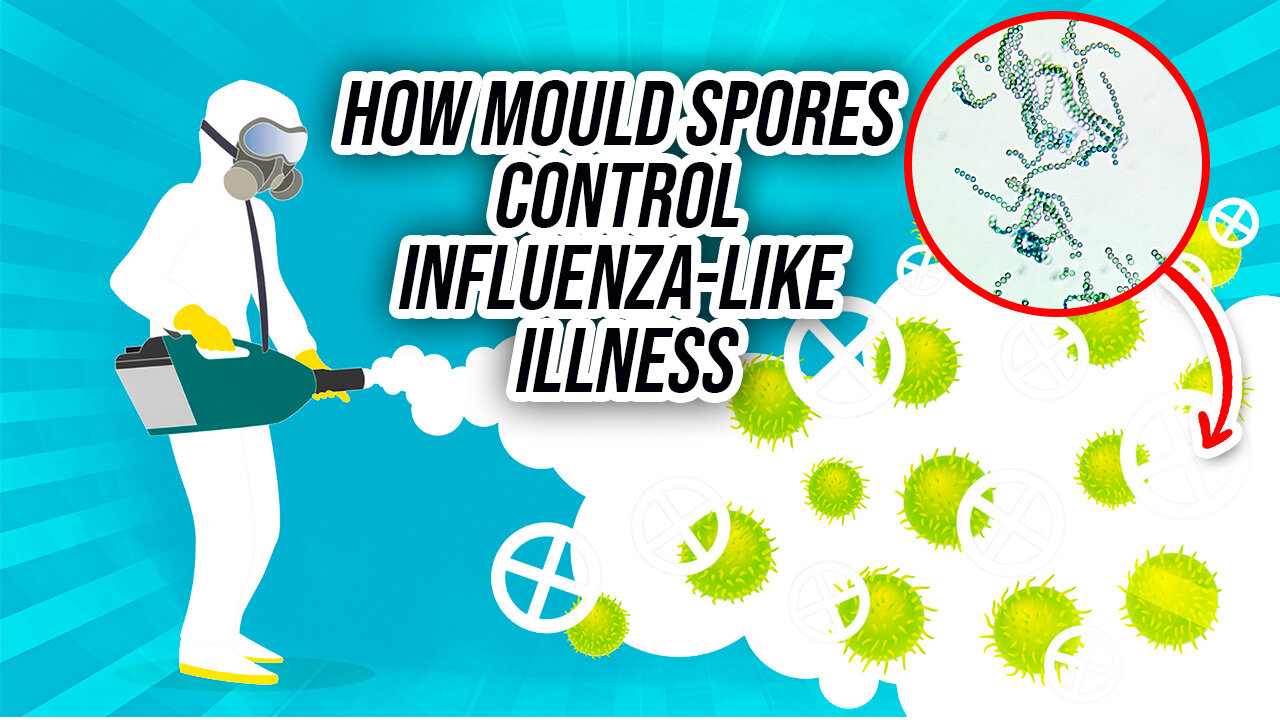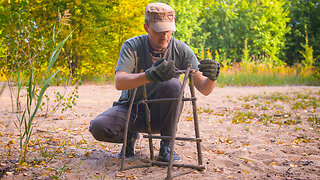Premium Only Content

How Mould Spores Control Influenza-Like Illness
Have you ever wondered whether there's a connection between the seasons and flu like epidemics? Well, this week on The Mould Show, we're going to be looking at two recent pieces of evidence, which focus on the fact that current models for flu-like epidemics are not sufficiently explained by the seasonality effect. Now, most of us would think to ourselves that colds and flus are often more frequent in the cooler winter months, and that gives rise to the seasonality effect. However, two papers have recently provided some stunning evidence suggesting that there is a strong statistical association between exposure to pollen and mould and the infection potential of flu-like illnesses.
We know that pollen is allergenic and that it's linked to immune-activation and defence against a range of different respiratory viruses. But, interestingly, it seems to create a bioaerosol that when inhaled, seems to lower the reproduction number of flu-like viruses.
These results for pollen were quickly followed up on by another research group that decided to look at whether or not there was a correlation with mould spore exposure.
And that's the main focus of this live stream. The follow-on paper and results show again, a statistically strong correlation between the total bioaerosol count, the total pollen count, and the total mould spore count and presentations to hospital emergency departments for influenza-like illnesses.
The final part of the presentation will review how the authors have used mould spore counts and pollen counts to show that COVID-19 presentations and hospitalizations are correlated with the airborne mould spores and pollen counts. This data has significant implications for how we understand disease transmission of flu-like illnesses and chosen interventions against. I look forward to you joining me for this exciting episode.
References:
Confirmation of an Inverse Relationship between Bioaerosol Count and Influenza-like Illnesses, Including COVID-19. On the Contribution of Mold Spores
Richa B. Shah, Rachna D. Shah, Damien G. Retzinger, Andrew C. Retzinger, Deborah A. Retzinger, Gregory S. Retzinger
medRxiv 2021.02.07.21251322; doi: https://doi.org/10.1101/2021.02.07.21251322
Pollen Explains Flu-Like and COVID-19 Seasonality
Martijn J. Hoogeveen, Eric C.M. van Gorp, Ellen K. Hoogeveen
medRxiv 2020.06.05.20123133; doi: https://doi.org/10.1101/2020.06.05.20123133
Now published in Science of The Total Environment doi: 10.1016/j.scitotenv.2020.143182
https://www.medrxiv.org/content/10.1101/2020.06.05.20123133v4
-
 1:05:34
1:05:34
The Big Mig™
11 hours agoConfirmed Kash Patel New FBI Director, Bring On The Pain |EP483
46.8K17 -
 53:59
53:59
Tactical Advisor
7 hours agoThe Vault Room Podcast 009 | Everyone Getting $5000?!
44.6K9 -
 2:04:44
2:04:44
TheAlecLaceShow
18 hours agoLive at CPAC | Interviews with Dean Cain, Rep. Comer and more! | The Alec Lace Show
57.2K3 -
 LIVE
LIVE
Major League Fishing
3 days agoLIVE Tackle Warehouse Invitationals, Stop 1, Day 2
312 watching -
 3:12:37
3:12:37
I_Came_With_Fire_Podcast
15 hours agoNOC Spy: CIA uses SATANIC RITUAL ABUSE to make SLEEPER Cells
56.3K9 -
 28:42
28:42
CatfishedOnline
1 day ago $2.88 earnedWoman Insists Morgan Wallen Relationship Isn't a Romance Scam!
45.8K1 -
 16:25
16:25
TSPLY
1 day agoNew CNN / MSNBC Meltdown Moments Of Getting Mad At Donald Trump In February
45.1K27 -
 8:33
8:33
scoutthedoggie
8 hours agoAirsoft War Games Scotland
61.5K7 -
 4:56
4:56
Kirill MultitoolOfficial
1 day ago $4.12 earnedSurvival TIPS and usefull bushcraft DIY in the wild
63.6K4 -
 27:25
27:25
ArturRehi
1 day agoThis is How Dictatorships are Formed
37K7